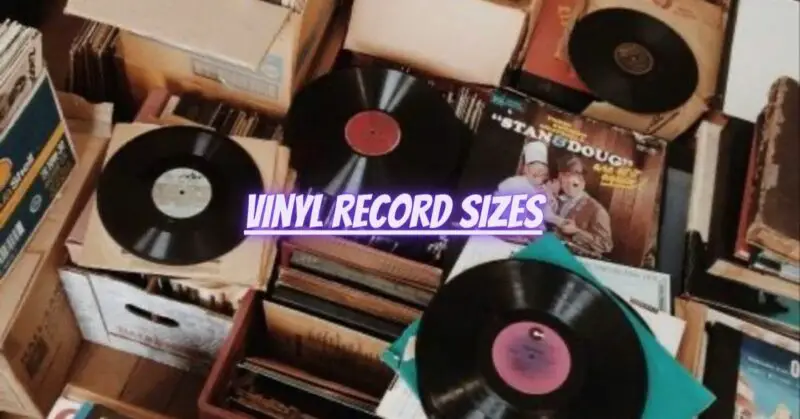Vinyl records come in various sizes, each with its own unique characteristics and history. The size of a vinyl record affects its playing time, sound quality, and the overall packaging. In this article, we will delve into the different sizes of vinyl records, their origins, and their significance in the world of music.
- 7-Inch Vinyl Singles (45 RPM): The 7-inch vinyl single, often referred to as a “45” due to its rotational speed of 45 revolutions per minute (RPM), is one of the most iconic record sizes. Initially introduced in the late 1940s, 7-inch singles became popular in the 1950s and 1960s as a format for hit songs. They typically contain one song on each side, allowing for a concise and accessible musical experience. 7-inch singles remain a favorite among collectors, DJs, and fans of popular music.
- 10-Inch Vinyl Records: 10-inch vinyl records, commonly played at 33 1/3 RPM, were prevalent in the early days of the vinyl format. Introduced in the late 1940s, these records offered more playing time than 7-inch singles, allowing for longer tracks or extended-play (EP) releases. They were often used for compilation albums, jazz recordings, and classical music. While less common today, 10-inch records have retained their nostalgic charm and are occasionally released as limited editions or specialty releases.
- 12-Inch Vinyl LPs (Long-Playing Records): The 12-inch vinyl LP (long-playing) revolutionized the music industry when it was introduced by Columbia Records in 1948. These records play at 33 1/3 RPM and are known for their extended playing time, typically holding 20-30 minutes of music per side. The larger surface area of 12-inch records allows for improved sound quality and the ability to explore longer musical compositions. LPs quickly became the standard format for albums across various genres, offering a more immersive and comprehensive listening experience.
- 10-Inch and 12-Inch Picture Discs: In addition to standard black vinyl, both 10-inch and 12-inch records are occasionally released as picture discs. Picture discs feature colorful artwork or photographs embedded within transparent vinyl, creating visually stunning collectible editions. While picture discs are admired for their aesthetics, they are often considered more susceptible to surface noise and may not provide the same sound quality as traditional black vinyl records.
- Non-Standard and Special Edition Sizes: Alongside the standard sizes mentioned above, there have been numerous non-standard and special edition vinyl record sizes released over the years. These include 5-inch records, 8-inch records, and even larger formats like the 15-inch or 16-inch “transcription discs” used for radio broadcasting in the early 20th century. These non-standard sizes are typically limited editions, novelty releases, or experimental formats that add unique dimensions to the vinyl experience.
Conclusion: The different sizes of vinyl records offer diverse musical experiences and have played significant roles in shaping the history of recorded music. From the compact 7-inch singles to the immersive 12-inch LPs, each size represents a distinctive era and format preference. Whether you’re drawn to the collectibility of singles, the depth of albums, or the allure of special edition releases, vinyl record sizes provide a range of options for music enthusiasts to explore and enjoy. The diversity and versatility of vinyl record sizes continue to captivate listeners, making vinyl a cherished medium for music appreciation and collection.


